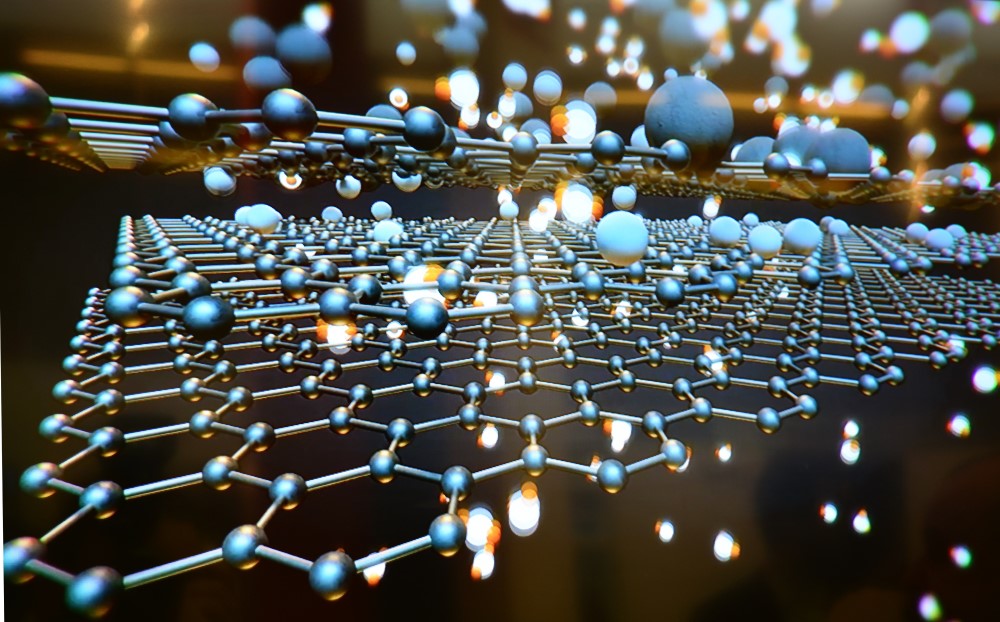-
A Detailed Overview of Graphene Nanoplatelets
May 18, 2020 | ACS MATERIAL LLCNanoparticles are microscopic particles that, in at least one dimension, measure less than 100nm. Nanoparticles have captured the attention of researchers and technicians around the world in nearly every field because they represent a bridge between atomic structures and bulk materials. Scientists are discovering that many properties are highly size-dependent; the percentage of atoms on the surface area of a particle has a significant impact on properties and performance. As a result, nanoparticles demonstrate different, sometimes vastly different, properties from their bulk counterparts.
Graphene Nanoplatelets are just one exciting member of the rapidly expanding universe of graphene-based nanomaterials. The unique size and morphology of these nanoscale stacks of platelet-shaped graphene sheets give them the ability to easily disperse into other materials, thus creating higher-value composite materials that are enhanced by the exceptional thermal, mechanical, and electrical properties of graphene.
The Basics
Graphene, a single layer of carbon atoms, was isolated in 2004 at the University of Manchester by Andre Geim and Konstantin Novoselov. These two researchers used sheets of sticky tape to exfoliate single layers from the surface of soft graphite and then deposit the layers onto a prepared silicon wafer. They won the 2010 Nobel Prize in Physics for their efforts.
Their discovery–graphene–is a two-dimensional material consisting of a single layer of carbon atoms bonded together in a hexagonal, honeycomb-like structure. A single sheet of graphene can actually be seen with the naked eye! Generally accepted as the thinnest compound currently known, graphene is also praised for its exceptional strength and elasticity as well as its phenomenal thermal and electrical properties.
Beyond the Basics
Following the isolation of graphene, the nanoparticle floodgates opened. New nanoparticles are being discovered and developed every day, and dozens of carbon-based nanoparticles are being researched by labs and graphene material suppliers. Graphene nanoplatelets are one of the many exciting new materials on the market. Graphene nanoplatelets are, very simply, platelet-shaped sheets of graphene stacked on top of one another. These graphitic stacks have an average thickness of 1-2 nanometers. They possess many of the same properties as graphene—albeit on a lower scale—but their barrier properties are better. This means that graphene nanoplatelets can easily be dispersed into other existing materials, which is something plain graphene can’t do.

In other words, adding graphene nanoplatelets to existing materials improves the properties of the resulting composite. Mechanical properties such as stiffness, strength, and surface hardness improve, electrical and thermal conductivity increase, and graphene nanoplatelet composites are less permeable to gas. Adding one material—graphene nanoplatelets—can improve several properties all at once, eliminating the need for multiple additives, films, and laminations. As a result, graphene nanoplatelets are a highly sought-after product that has uses across a broad spectrum of industries and applications.
Applications
Where are graphene nanoplatelets being used?
- Composites. Graphene nanoplatelets (GNP) are widely used in the fabrication of composites. GNP composites benefit from the mechanical, electrical, and thermal properties of GNP. The automotive and airline industries are creating significant demand for GNP composites; GNP composites reduce weight and bolster fuel efficiency. The construction industry is also an area of growth for GNP composites.
- Energy and Power. GNP are used in electrodes, batteries, and supercapacitors because of their ability to improve the durability, performance, and capacity of power systems at a relatively low cost. The increased demand for hybrid vehicles is fueling demand for GNPs as is the skyrocketing demand for lightweight, high-power consumer electronics around the world.
- Inks and Coatings. Inks and coatings made with GNPs demonstrate excellent electrical and thermal properties. Products such as printed electronics, RFID tags, heat sinks, smart labels and packaging all present opportunities for GNPs.
Trust ACS Material
ACS Material is a leader among graphene suppliers around the world. Our Graphene Nanoplatelets are made to conform to exacting standards for quality, consistency, and purity. We are a trusted source for GNPs and other nanomaterials. Take your research to the next level today with graphene nanoplatelets from ACS Material.